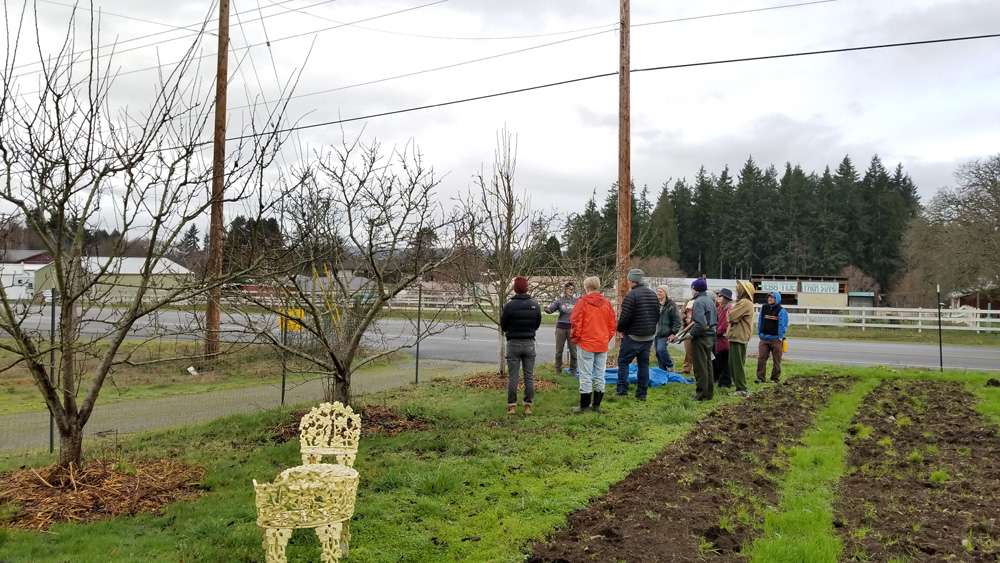Harvest Against Hunger Capacity VISTA Brandi Blais serves at Good Cheer Food Bank and Thrift Stores, an innovative shopping model food bank located in Langley, WA. Supported by a combination of in-kind donations and revenue from its two thrift stores, Good Cheer provides food to 800+ families on South Whidbey Island each month. The gleaning program is an essential part of Good Cheer’s grocery rescue efforts, adding locally sourced fresh produce to the food bank during the harvest season. Brandi’s mission at Good Cheer is to expand and build on the existing gleaning program, creating a sustainable, volunteer-led program that will continue to bring fresh produce to those who need it for years to come.
Here at Good Cheer Food Bank on Whidbey Island, most of the gleaning work is harvesting from fruit trees donated to the food bank. There are a few farm gleans in the cold months, but for the most part winter is the time to work on indoor projects. One highlight of the VISTA’s winter work is sending out thank you’s and an end of the season summary so that both donors and volunteers can see just how much they contributed to feeding the local community.
In December, Brandi sent out thank you post cards she created in Illustrator and printed on card stock to all of the tree donors and farm partners; the cards included the total for the year, either from the farmer’s market or from fruit tree gleaning. The totals from 2019 were 2543 pounds from the farmer’s market and 3397 from fruit tree gleaning.
Since fruit trees are the mainstay of the gleaning program, educating tree donors about fruit tree care and providing them with resources has direct benefits for the food bank; healthy trees live longer and produce better fruit, and working to eradicate pests like apple maggot benefit the environment in general.
Fruit trees are typically pruned in January or February, so early winter is a good time to use the monthly gleaning newsletter to let tree donors know about local pruning classes, and any other useful local resources. Some years, the Good Cheer Garden hosts a pruning class, using their trees as demonstration. If not, the Pacific Rim Institute in Coupeville puts on fruit tree workshops every year around this time. For those who might not be able to prune their own trees (or don’t feel comfortable doing their own pruning), Good Cheer has a short list of local arborists who specialize in fruit trees to recommend.
Other winter newsletter topics include: creating native bee habitats, fending off pests like apple maggot and coddling moth, supporting pollinators in the garden, how to put trees to bed for the winter by mulching, and information about choosing, planting, and caring for new fruit trees.



